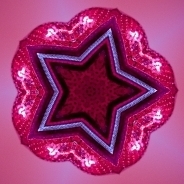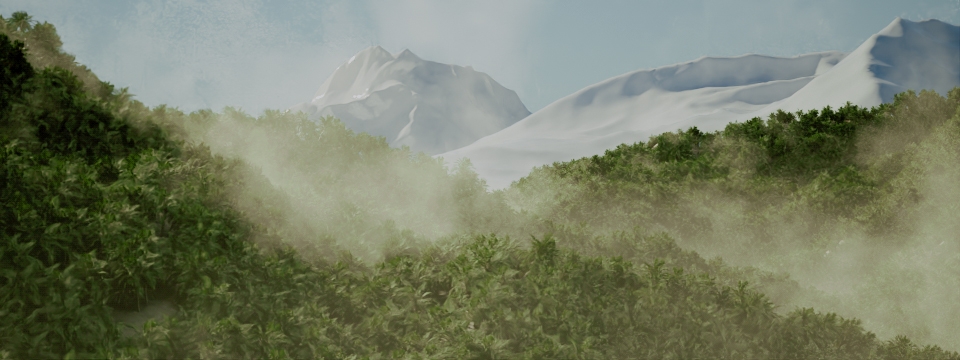-
Posts
402 -
Joined
-
Last visited
-
Days Won
24
Content Type
Profiles
Blogs
Forums
Gallery
Pipeline Tools
3D Wiki
Plugin List
Store
Downloads
Everything posted by keppn
-

Better way to animate? Using the dope sheet and re-timing animation...
keppn replied to Lasse Leon's topic in Cinema 4D
Oh wow, layer colors in the dope-sheet! I didn't know that, thanks a lot, @Mash! One thing that always bothers me in C4D: Parents always show the accumulated keys of their children, which makes the dopesheet super-busy. Example: "Null" - has zero keyframes "Kugel" - 2 Keyframes "Würfel" - 2 Keyframes I'd like to see only the 4 "real" keyframes, not 8. It's a small problem in this example, but in a complex scene I just go blind 😵 -
There's no caching option in the IK-Dynamics Tab Adding e.g. a rigid body Dynamics tag and caching that doesn't include the IK Dynamics MoGraph-Cache doesn't work I would prefer not to use any plugin here... Baking the object messes up the eye positions (They dance around wildly). Also, baking seems like a clunky workflow....
-
Setup My rigged whale has a IK-chain with dynamics to the fin, so the fin follows the upper-body movement with a little delay. This works wonderfully so far Problem I animated the upper body with keyframes. Right now, IK-dynamics are recalculated every time I scrub in the timeline, which is slow. Also, I can't resume renders, because the IK-dynamics are solved a little differently each time, so I need to cache before rendering Question How do I cache the IK dynamics of the fin? For the life of me, I can't find no way to do that?!
-

UPDATE ON VARIOUS DCCS AND CG TECHNOLOGIES. (August) - REGULARLY UPDATED
keppn replied to HappyPolygon's topic in News
@Jeff H1They made licensing such a mess... right now, I honestly can't say what I currently have and what my future ootions are o_O -

UPDATE ON VARIOUS DCCS AND CG TECHNOLOGIES. (August) - REGULARLY UPDATED
keppn replied to HappyPolygon's topic in News
Thank you for this thread, @HappyPolygon! Much appreciated 🤩 -
Btw, this is a superb plugin. It scans a folder with PBR-maps and generates a tidy Redshift-shader with 1 click. It saves tons of time and includes some comfort-nodes in the shader-tree: https://danielsian.gumroad.com/l/redshift_pbr_material
-
This is a handy overview for PBR-Materials in Redshift:
-

Can I render Pyro with anything other than Redshift ?
keppn replied to HappyPolygon's topic in Cinema 4D
Yeah, you can cache Pyro to a VDB-sequence. I don't know Corona, but it should have a native Volume shader to render the VDBs. -
Maybe Rocketlasso's 'Slicer' would be handy here? https://rocketlasso.gumroad.com/l/slicer-from-rocketlasso?layout=profile
-

Move camera backward while keeping the camera movement animation
keppn replied to Citania Cit's topic in Cinema 4D
d'oh! I have never noticed "Animation path -> Spline". That's quite a useful function. Thanks! 🙂 -
Now I'm getting a popup about my limited membership in addition to the red banner. Can you please fix that?
-
Impressive indeed... That AI certainly travelled through France thoroughly!
-
Acrobat was always the worst of the bunch in terms of UI... like unusable bad. I'm afraid to open the new version now O_O
-

So they found the "Einstein"-Tile (as in "one stone")...
keppn replied to kweso's topic in Discussions
Redshift-Users can also get a "No-Tile"-Shader on this OSL-Repository. It randomly scales, rotates and blends a single non-tiling texture; for simpler organic stuff like outdoor-ground, it works surprisingly well. https://github.com/redshift3d/RedshiftOSLShaders -
Hey Ras, you can add multiple audio-files to the timeline: Make a null object Drag it to the timeline (dopesheet) In the Dopesheet: Rightclick -> Add Special Track -> Sound Now you have multiple audio-tracks in the timeline. In the Attributes Manager, you can "mute" a track by unclicking "use sound". The respective audio track will be grayed out, so can see in the visual representation which audio-track is active. Muted tracks can still be referenced by other parts of C4D, so this should work for you. Please make it a habit to render out only image files from C4D. Sound and Effects should be added in AfterEffects/Premiere/Whatever. Directly rendering movies including sound is quite prone to error and not as flexible.
-
It's included in the Maxon-subscription and pretty well integrated, so it's almost the logical move. Anyway, I'd try out the demos for Redshift, Octane and VRay. They are all quite similar. Redshift ist the fastest, but also a little barebones - like a racecar 🙂 Speed is crucial though - it allows for more iteration, earlier free time or higher quality (Depth of field, Subsurface Scattering, GI...) in the same time envelope.
-
I made a quick test to compare rendertime with Redshift on a RTX4090. Resolution is 4000 x 10000 px, Rendertime ~ 55 seconds. So yeah, changing engines would most definitely speed up things, even on other GPUs.
-
Yes, there's a switch in the Redshift preferences; you can still use the older Xpresso-style-Shadergraph or the new nodes. I admit, I'm still using the old Shadergraph... I'm used to it, and I find it easier to read. It's somewhat finnicky, though. Maybe it's time to adapt now...
-
Redshift's Flakes-Shader is really nice, too. (A similar solution was already available via OSL, not sure if this is different at all, but much more convenient) A caveat: The Flakes-Shader goes directly into the material, not via a Bump-Shader, like every other thing. I know, I'll forget that at least 30 times 😅
-
Aaawww, 'Thicken ' + Fields is exactly what I need for an upcoming scene. Very good timing! 😄 Sure, I may sound like a fanboy, but I love the way the features build on top of each other... 904113844_Aufzeichnung2023-03-29181230.mp4
-
I didn't have the new Commander (Shift+C) out of the box. I had to reassign the shortcut to the new Commander: The new Commander is so cool! 🙂 I don't think I'm going to touch the menus in the foreseeable future...
-
The Maxon One Spring release has arrived: https://www.maxon.net/en/article/spring-2023-maxon-one-release-adds-extraordinary-value I'm excited about the Redshift-News, off I go exploring! 😄
-
Epic Games announced that the marketplaces of Quixel, Sketchfab, Unreal and ArtStation will be consolidated to a single huge marketplace - www.fab.com It seems they're going platform-agnostic with all assets, which would be a great benefit for users. Sellers of assets will keep 88% of revenue, which sounds somewhat reasonable, too. I'm slightly optimistic that this will be a good thing for the industry.
-
They said in the end of the video: "Dev-Box with hi-end Intel CPU and one RTX4090" - so pretty off-the-shelf-stuff. But I think Unreal is still dependant on a DCC feeding it assets, because it's toolset for creation is limited?
-
I built a small landscape recently in C4D. Though using Redshift and Quixel assets, I didn't come near this level of detail, because iteration-time slowed significantly with every level of detail. To see Unreal procedurally adapt mid- and small-level detail to user interaction on a macro-scope _in realtime_ is just... just... it makes me question all my software choices 😞

